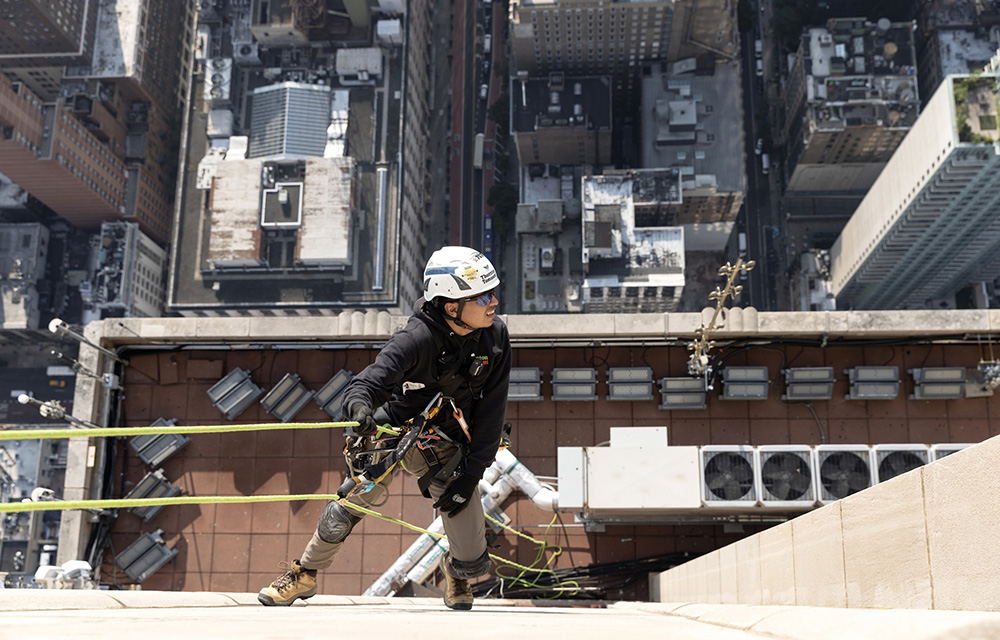News:
Construction Design & Engineering
Posted: June 9, 2015
LED lighting poised for quantum leap: Long-term cost savings and benefits
A year and a half ago, looking at energy conservation trends in commercial buildings, we predicted light-emitting diodes (LEDs) were becoming a game changing energy source. At that time, manufacturers had perfected production of true white light. Concurrently, there was growing awareness of the long-term cost savings of LED lighting compared to fluorescent and incandescent lighting as well as the benefits of lower replacement and maintenance costs and savings on cooling costs.
Have LEDs made inroads in commercial usage? Without a doubt.
In one of the world's largest relighting projects, Los Angeles has installed over 140,000 LED streetlights and spent $57 million to retrofit 215,000 lights.
The Washington, D.C. Metro system has begun a major energy-efficient LED project to upgrade lighting in 25 parking garages.
San Jose, CA is replacing 62,000 streetlights to LED lights including a control and monitoring system.
Las Vegas, which installed 42,000 LED streetlights, is saving $2 million a year on energy and maintenance costs.
Plan NYC includes replacement of all 250,000 streetlights with LEDs, predicting an 80% decrease in maintenance costs of $8 million a year and $6 million a year in energy savings.
Other cities, which have or are moving in the direction of adopting LED technology include San Francisco, San Antonio, Austin and Montreal.
Super Bowl XLIX was the first to be illuminated by LEDs. Brighter than the old lamps, only 312 units were needed to replace 780 metal halide lights originally installed in the University of Phoenix Stadium. The new lights use 75% less energy and are anticipated to last at least 20 years.
Electric lamps have been around since the 19th century, but LEDs are leading a 21st century lighting revolution. According to the Department of Energy (DOE) solid-state lighting has shown very significant advances:
* For 2013, the installed base of LEDs in the U.S. increased in all LED applications, more than doubling from 2012 to about 105 million units.
* The annual energy cost savings from LEDs more than doubled in 2013 from the previous year, increasing to $1.8 billion. That is enough money to pay the annual lighting electricity bill for over 14 million U.S. homes.
The DOE found that by 2025, solid-state lighting technology offers the potential to save 217 terawatt-hours (TWh) or about one-third of current site electricity consumption used for lighting in the U.S. This projected savings corresponds to about 2.5 quadrillion British Thermal Units of primary energy generation, which is approximately equal to the projected electricity generation of wind power and twelve times that of solar power in 2025. At a price of $0.10/kilowatt-hour, this corresponds to an annual savings of $21.7 billion.
Why then is not every commercial building in New York City converting to LED lighting when doing so creates huge reductions in energy usage and maintenance costs that translates into increased profits and property value?
The answer is while long-term benefits are undeniable (predictions are that solid-state lighting will be the dominant lighting technology within the next decade) and market adoption is gaining significant momentum, the biggest obstacle is in initial cost.
While property owners and facilities and building managers can see the competitive advantage in LED lighting, they must still be able to afford or finance hundreds of thousands of dollars in upfront costs. Significant, yes, but advanced energy-efficient lighting sources can save up to 50% in energy as well as reduce cooling and maintenance costs. With costs of LEDs decreasing, a LED lighting retrofit can pay for itself in a few years.
Steven Schleider, MAI, LEED-AP BD + C, is the president, Metropolitan Valuation Services, New York, N.Y.
MORE FROM Construction Design & Engineering
NYC mayor and DOB release comprehensive façade inspection and safety study conducted by Thornton Tomasetti
Manhattan, NY New York City mayor Eric Adams and New York City Department of Buildings (DOB) commissioner Jimmy Oddo released the full recommendations from a comprehensive engineering study conducted by global engineering firm Thornton Tomasetti

Quick Hits







.gif)
.jpg)

.gif)